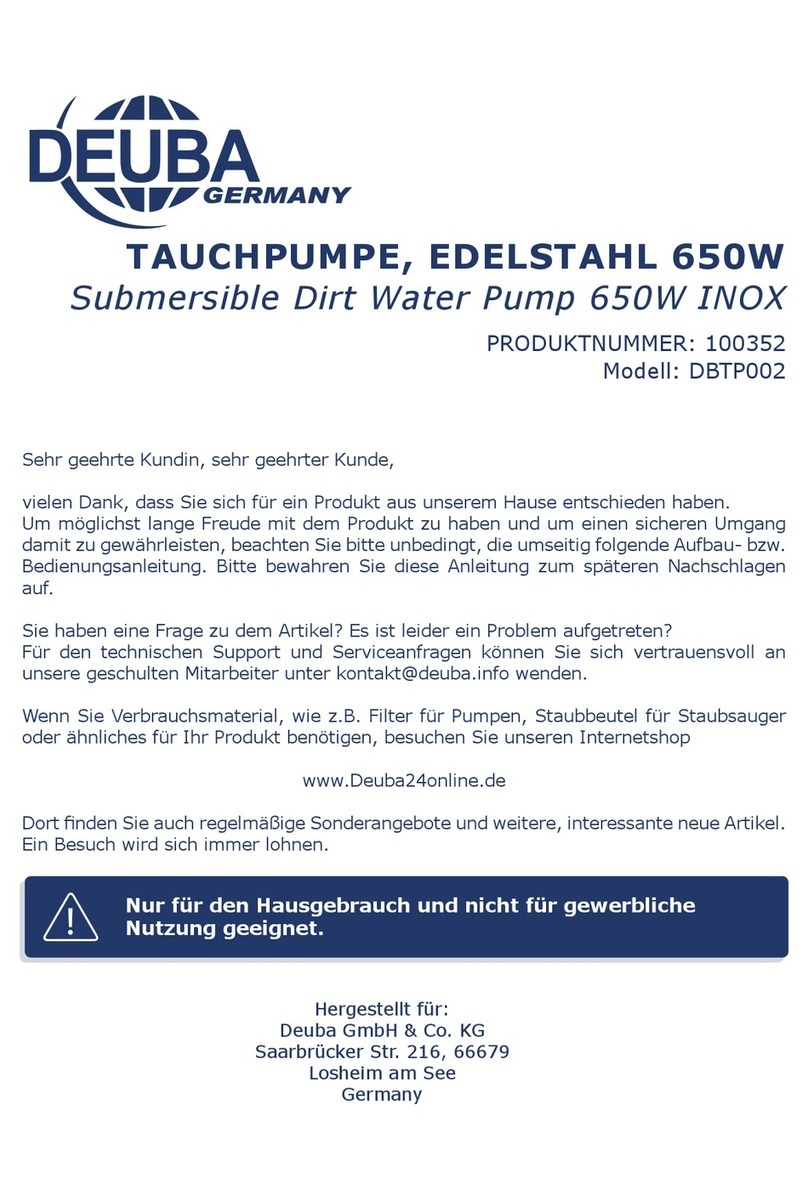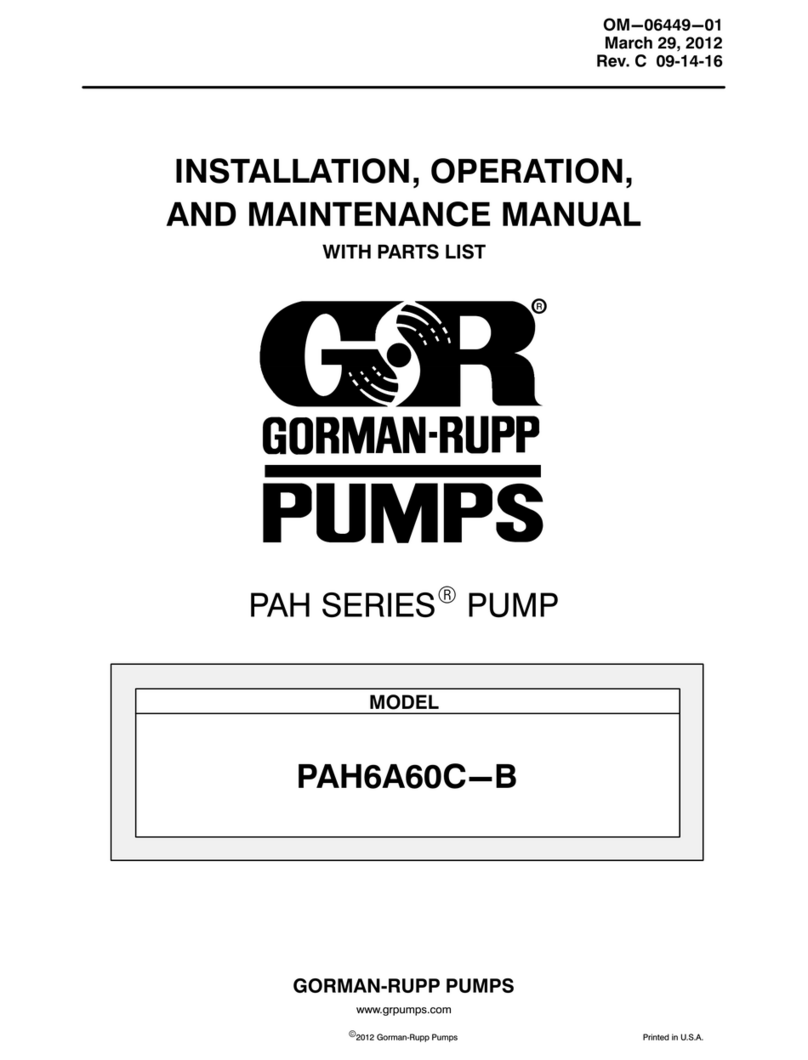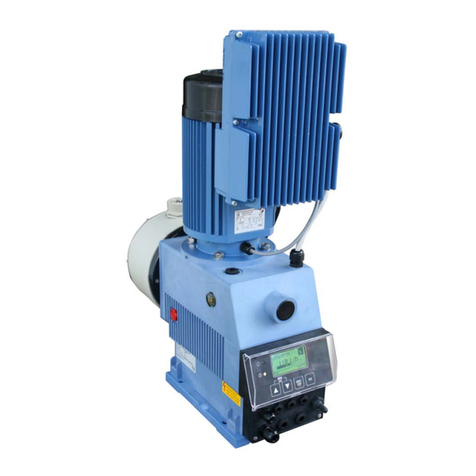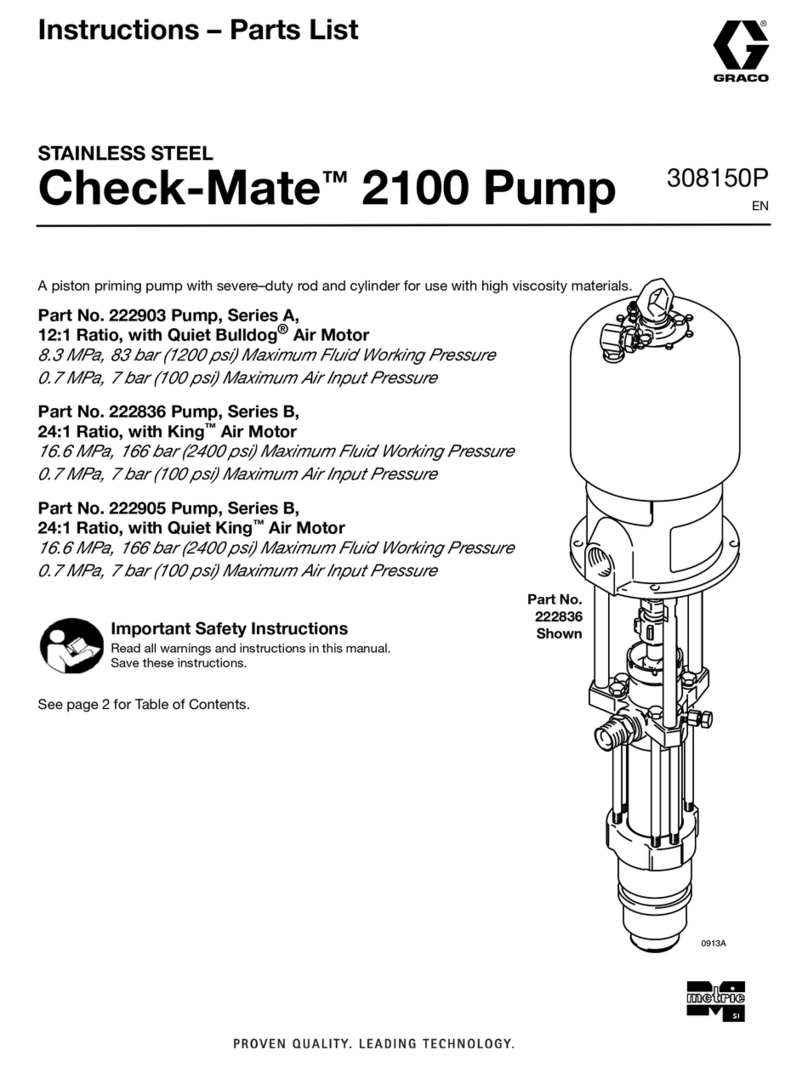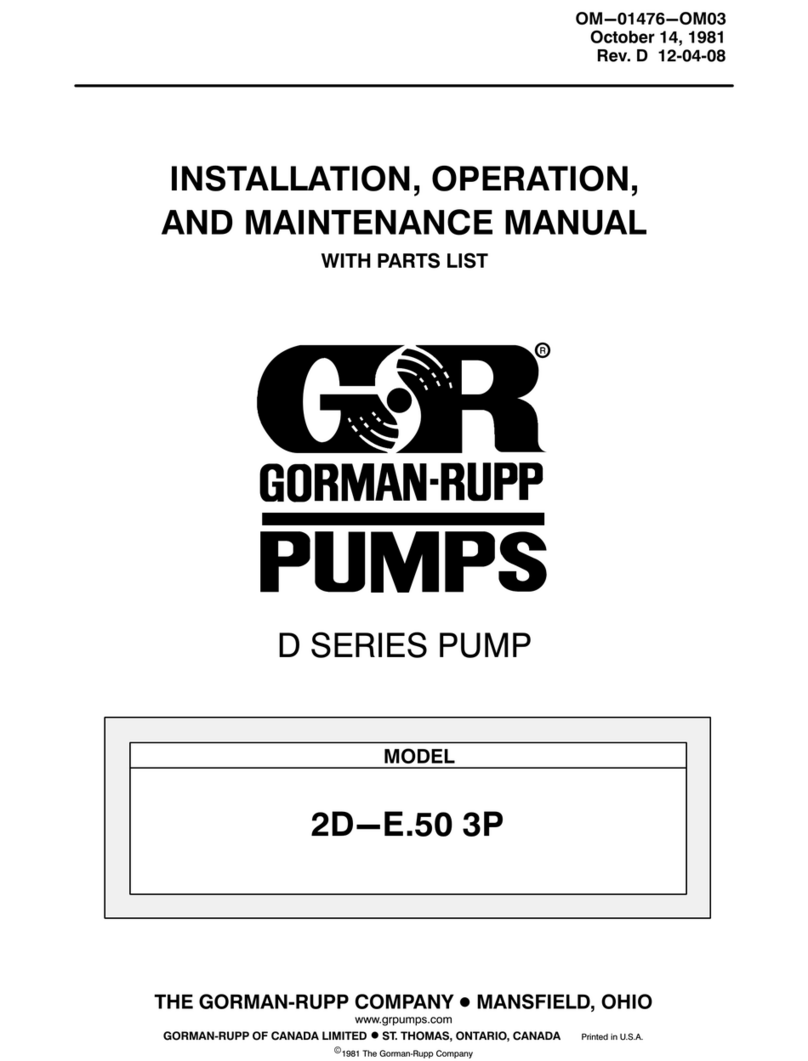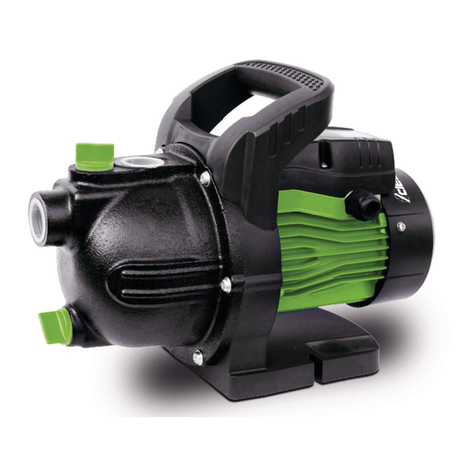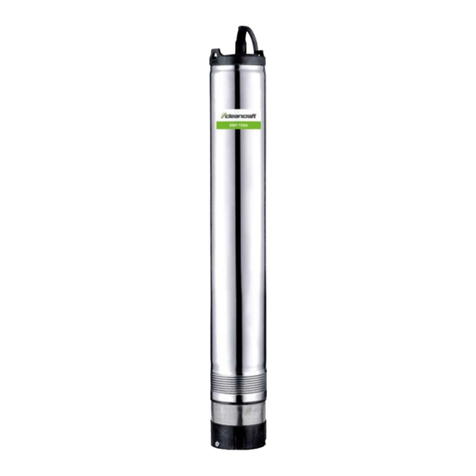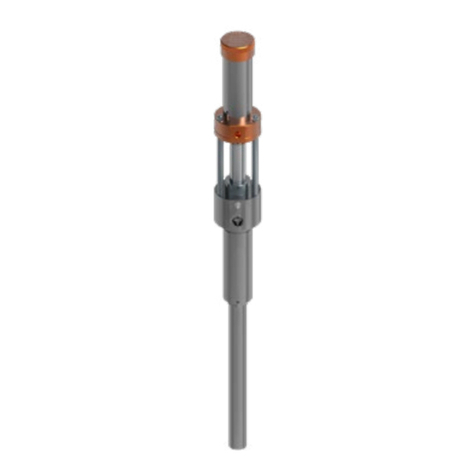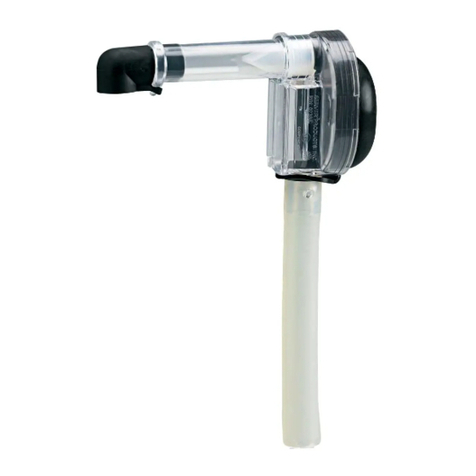
16 DWS - Series | Version 1.03
Disturbances, possible causes and measures
13 Disturbances, possible causes and
measures
ATTENTION!
If one of the following errors occurs, immediately
stop working with the water pump.
Before you begin troubleshooting, turn off the water
pump and unplug the power card. Otherwise it
could lead to serious injuries.
All repairs or replacement work may only be carried
out by qualified and trained specialist personnel.
NOTE!
If you can not solve the problems with the your house
water system yourself, then please contact your ne-
arest CLEANCRAFT dealer. Please write down follo-
wing information from the water pump or the opera-
ting instructions in advance to help you your
problem in the best possible way.
- Model name of the device
- Serial number of the device
- Constructions year
- Exact error description
Malfunction Possible cause Measurement
The motor can not be star-
ted
1. No power available.
2. Capacitor is defective.
3. The rotating shaft and bearing. are
jammed.
4. The impeller is jammed.
1. Check with a GS-compliant device whether voltage
is present. Check mains plug.
2. Contact customer service.
3. Check the cause and remove the blockage from
the pump.
4. Turn the rotating shaft of the fan blade connector
with a screwdriver or disassemble the pump. body
to remove small parts.
The pump does not reach
the desired pressure.
1. Cut-out pressure set too high. 1. Contact customer service
Pump does not start. 1. Cut-out pressure set too high. 1. Contact customer service
The motor is operating but
the pump does not pump
liquid.
1. The pump housing is not filled with
the water.
2. Infiltration of air into the suction
pipe.
3. Water level is too low.
4. Outdoor temparatur is too low (wa-
ter froozen)
5. The water pipes are defect.
1. Fill the pump housing with the water.
2. Verify and ensure that the suction pipe and all
connections are tight.
The inlet of the suction pipe including the non-re-
turn valve is immersed in the pumped liquid. The
non-return valve with filter is closes tightly and not
blocked. There are no siphons, bends, counter
slopes or constrictions along the suction lines.
3. Change of the installation, so that the suction head
and/or delivery head do not exceed the maximum
value.
4. Increase the temperature, start the pump as soon
as the ice has thawed completely.
5. Check water pipes and replace if necessary.
Pump is not running pro-
perly and is very noisy.
1. Improper water supply.
2. Suction pipe is defective.
3. Gaskets are defective.
4. Suction pipe is blocked.
5. Suction head and/or delivery head
is too high.
1. Check the water supply
2. Check the suction pipe, replace if necessary
3. Check all gaskets, replace if necessary
4. Clean the suction pipe
5.
Change the installation so that the suction head and/or
delivery head do not exceed the maximum value.
The flow rate is insuffi-
cient.
Suction nozzle, suction pipe, suction
hose or filter are blocked.
1. Remove the blockages.
2. Clean or replace the filter.
3. Insert the filter cover correctly.
4. Check the corrected installation of the filter.
The pump stops after a
short period of the opera-
tion
1. The electrical connection does not
correspond to the information on
the nameplate.
2. Solids block the pump or the suc-
tion pipe.
3. Dry running of the pump.
4. The temperature of the liquid or
environment is too high.
1. Check the voltage on the wires of the connecting
cable with a GS-compliant device.
2. Remove the blockages.
3. Eliminate the causes of the dry running.
4. Make sure that the temperature of the pumped li-
quid and environment does not exceed the maxi-
mum allowed values.




















